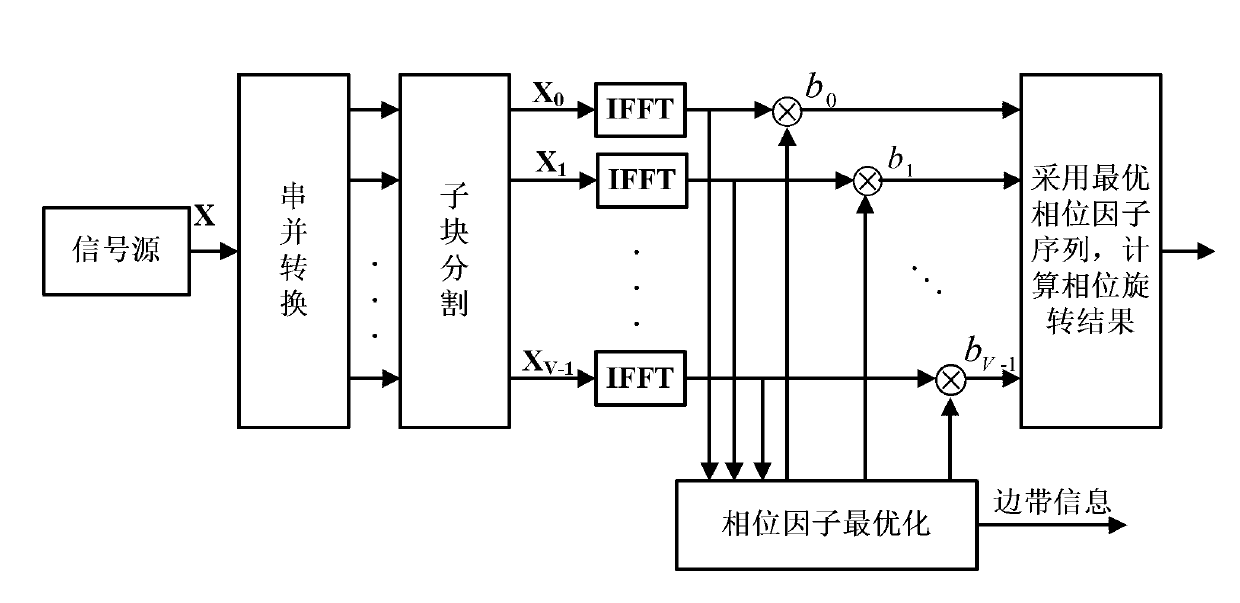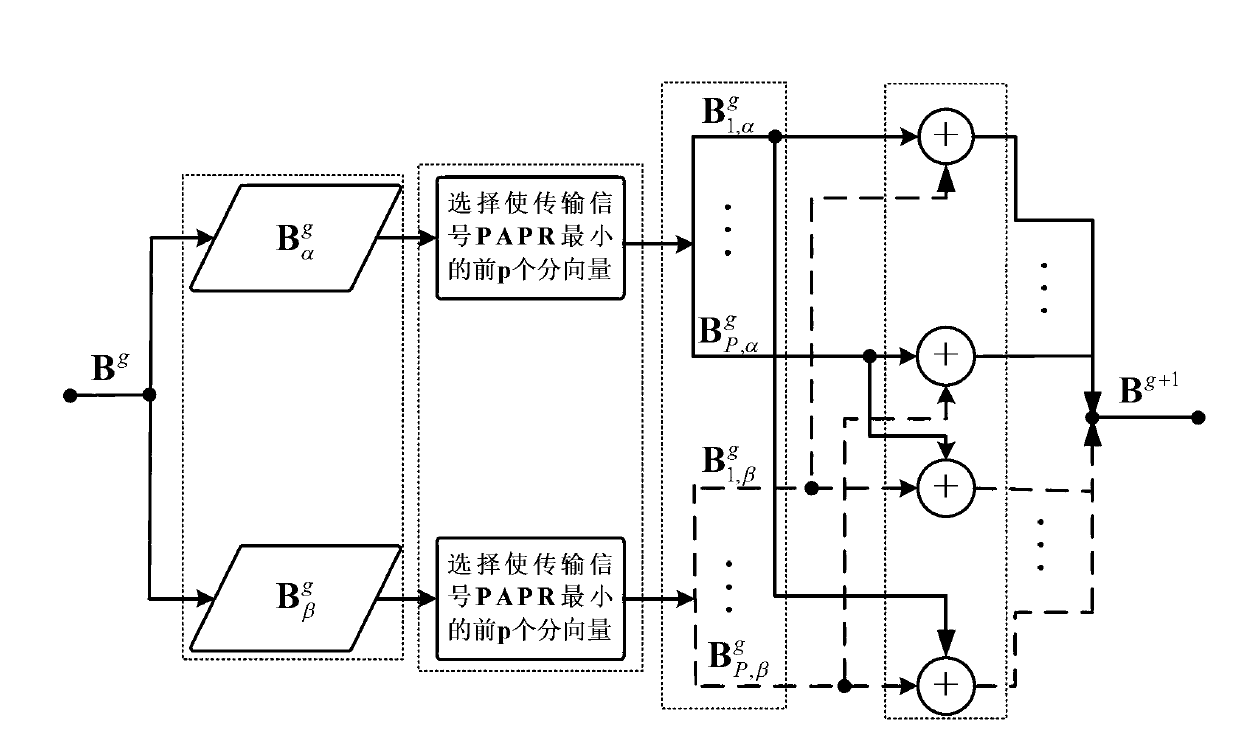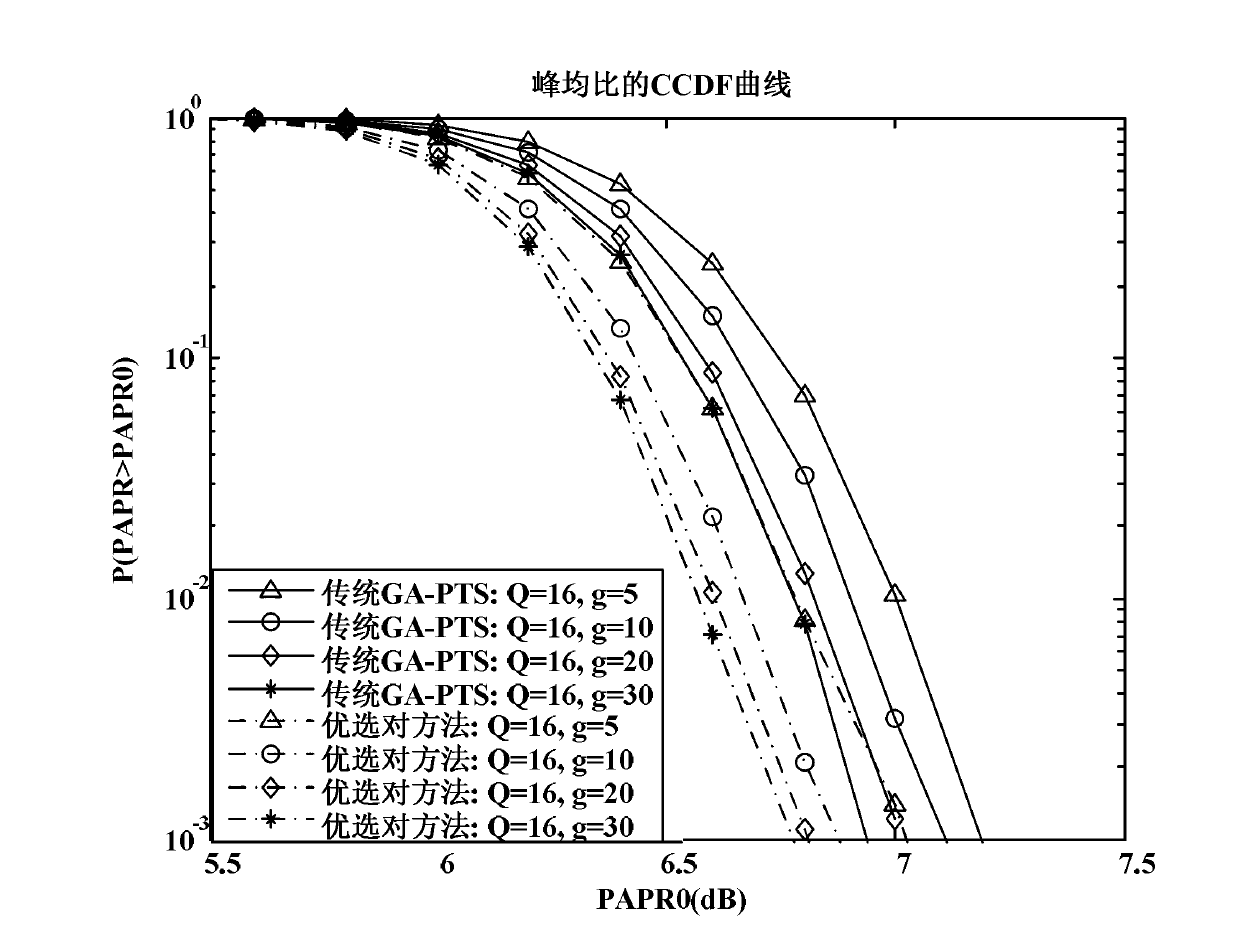Phase factor preferred pair method for reducing PAPR of OFDM signal
A phase factor, optimal pair technology, applied in the multi-frequency code system and other directions, can solve the problems that the OFDM system cannot be fully satisfied, the number of iterations is high, and the computational complexity is high.
- Summary
- Abstract
- Description
- Claims
- Application Information
AI Technical Summary
Problems solved by technology
Method used
Image
Examples
Embodiment
[0029] figure 1 It is a system block diagram of a specific implementation of the method for reducing the phase factor optimization of the PAPR of the OFDM signal according to the present invention. like figure 1 As shown, the preferred pair method for reducing the phase factor of the PAPR of the OFDM signal according to the present invention includes the following steps:
[0030] Step 1: Receive an OFDM signal, perform serial-to-parallel conversion on the signal, and obtain a data frequency domain signal X.
[0031] Step 2: Using the arbitrary division method of dividing sub-blocks in the PTS method, divide the data frequency domain signal X into V blocks, denoted as X v ,v=0,1,...,V-1.
[0032] Step 3: Convert the V block data to the frequency domain signal X v Perform IFFT transform respectively to obtain V block data time domain signal Y v ,v=0,1,...,V-1, the data time domain signal matrix is Y=[Y 0 ,Y 1 ,…,Y v ,…Y V-1 ], V block data time domain signal Y v The ...
PUM
 Login to View More
Login to View More Abstract
Description
Claims
Application Information
 Login to View More
Login to View More - R&D
- Intellectual Property
- Life Sciences
- Materials
- Tech Scout
- Unparalleled Data Quality
- Higher Quality Content
- 60% Fewer Hallucinations
Browse by: Latest US Patents, China's latest patents, Technical Efficacy Thesaurus, Application Domain, Technology Topic, Popular Technical Reports.
© 2025 PatSnap. All rights reserved.Legal|Privacy policy|Modern Slavery Act Transparency Statement|Sitemap|About US| Contact US: help@patsnap.com



